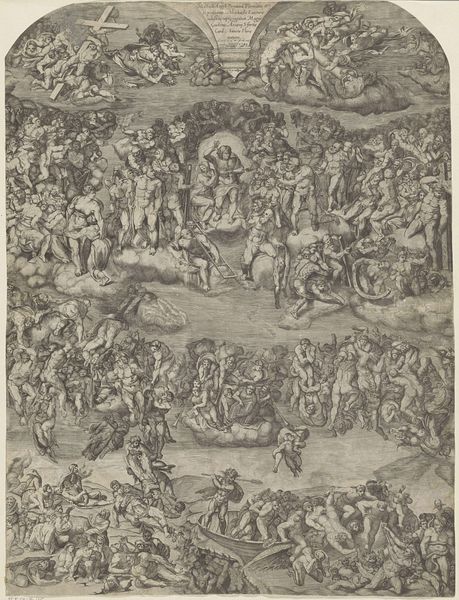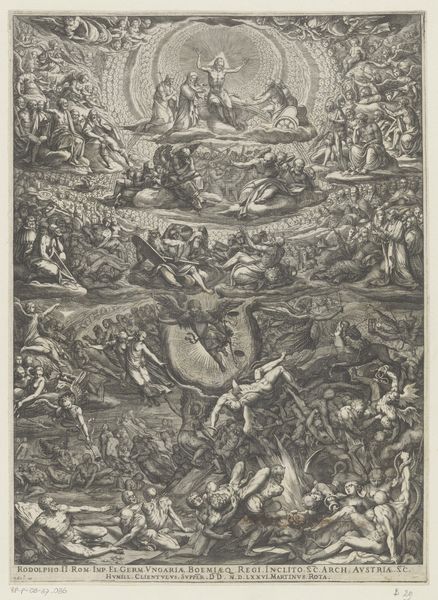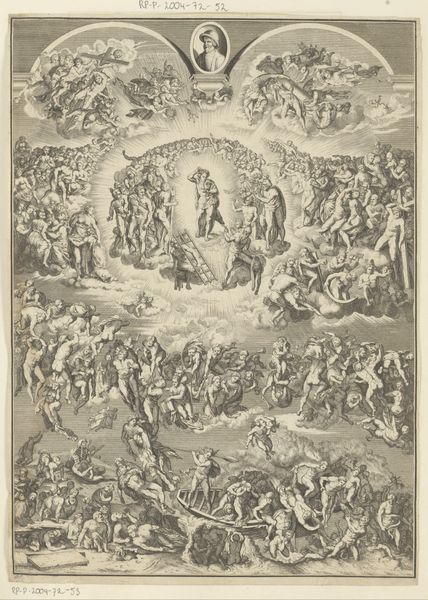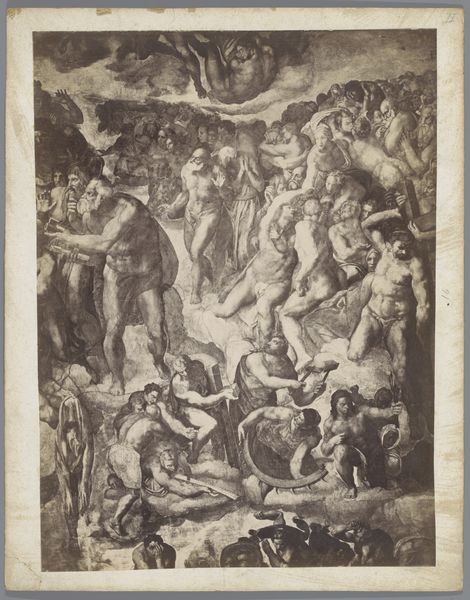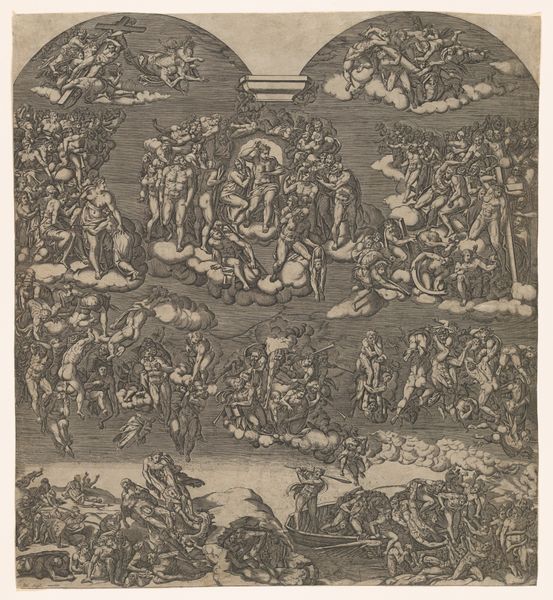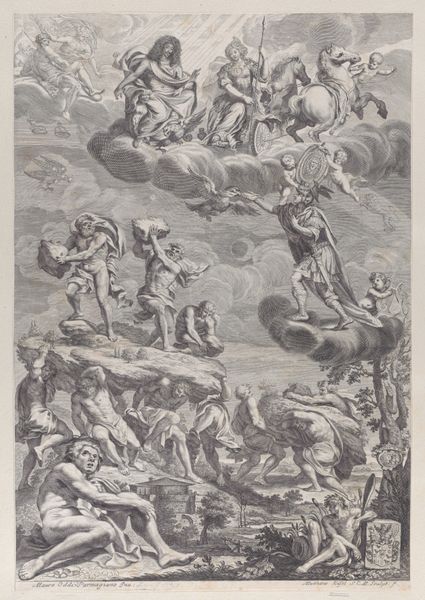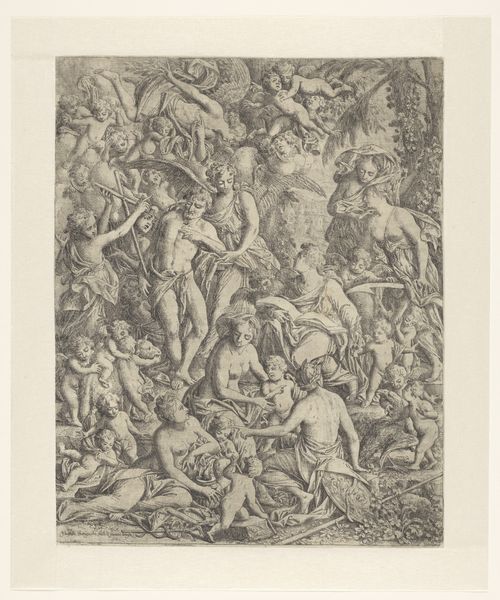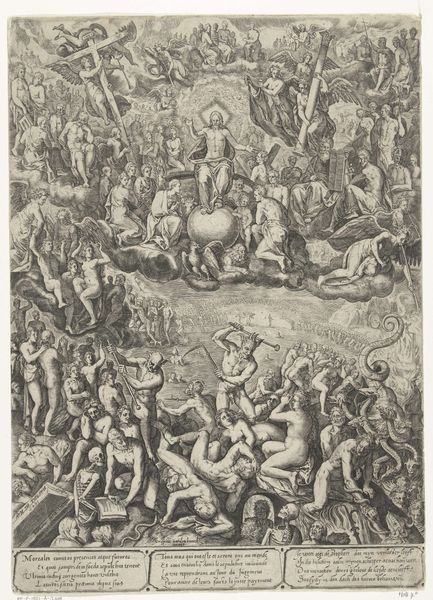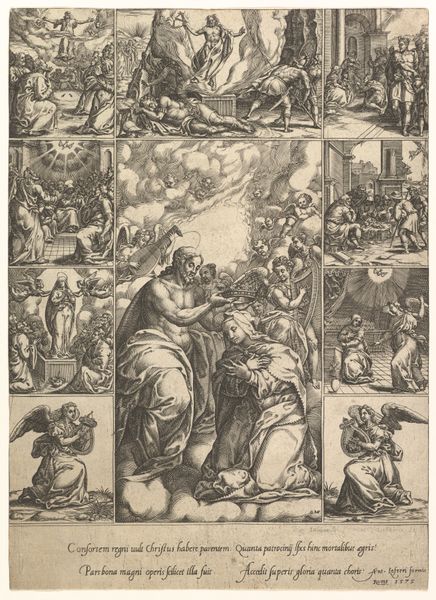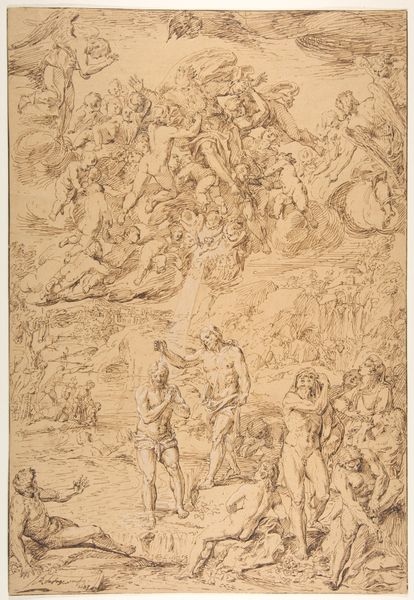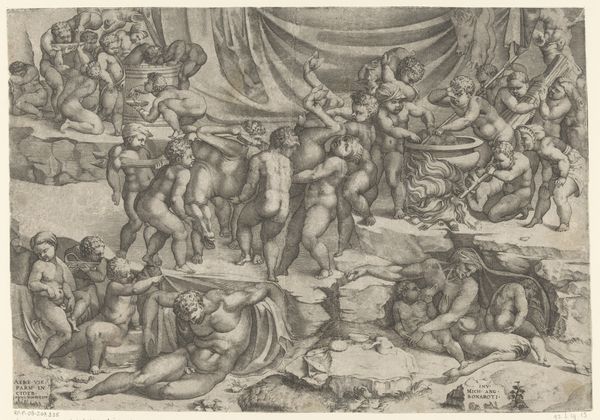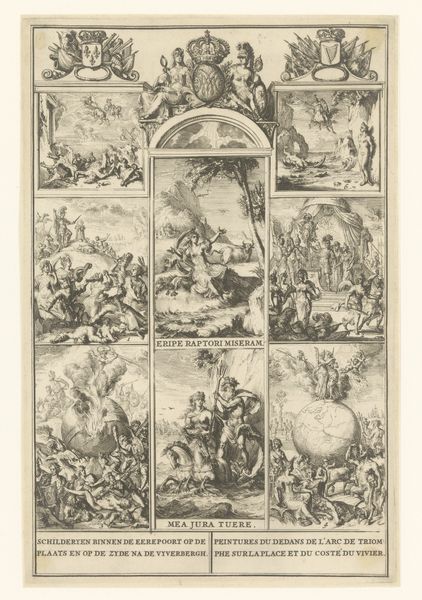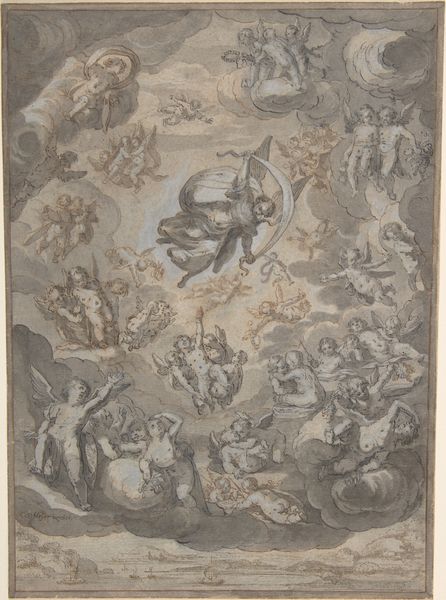
The Last Judgment from the Sistine Chapel 1546 - 1550
0:00
0:00
drawing, print, etching, intaglio, ink, pen
#
drawing
#
ink drawing
#
pen drawing
# print
#
pen sketch
#
etching
#
intaglio
#
mannerism
#
figuration
#
ink
#
linocut print
#
pen
#
history-painting
#
italian-renaissance
#
nude
Dimensions: Sheet: 22 13/16 × 17 3/8 in. (58 × 44.2 cm)
Copyright: Public Domain
Editor: This is "The Last Judgment from the Sistine Chapel," a print made between 1546 and 1550 by Giulio Bonasone. It's an etching and intaglio print of Michelangelo's famous fresco. There's a tremendous sense of dynamism here, almost chaotic. How do you approach something with so much going on visually? Curator: Indeed, its visual density presents an intriguing formal challenge. Observe how Bonasone employs line. The etching captures the anatomical exaggerations and swirling movement of Michelangelo's figures, yet also flattens the image into a dense tapestry. Editor: Yes, the line work is quite striking! It’s almost as if the individual forms are secondary to the overall pattern they create. But is there a sort of...structure? Curator: Precisely. Consider the composition. Do you notice any directional forces created by the arrangement of the figures themselves? Editor: I think so! My eyes definitely move around following the limbs and gestures, like a visual current! Starting perhaps around the middle. Curator: Note how the artist creates a powerful diagonal thrust leading towards a vortex of figures, perhaps suggesting both ascent and descent. The formal structure, therefore, echoes the thematic concerns of judgment and the soul's ultimate trajectory. The interplay of light and dark, created through varied line density, contributes to this sense of dynamic tension. Does the materiality enhance or detract from the original? Editor: That’s interesting to consider—that flattening both creates tension and emphasizes form. It perhaps helps us focus more on pure visual structure rather than just narrative. Thanks, I am starting to see so much more in this. Curator: Yes. Sometimes distance and a change of material, such as intaglio instead of paint, actually bring us closer.
Comments
No comments
Be the first to comment and join the conversation on the ultimate creative platform.
